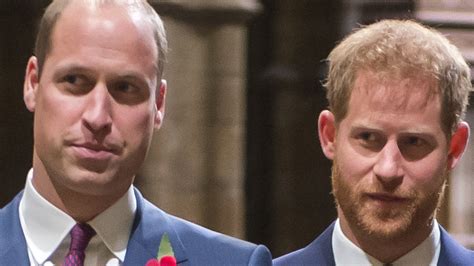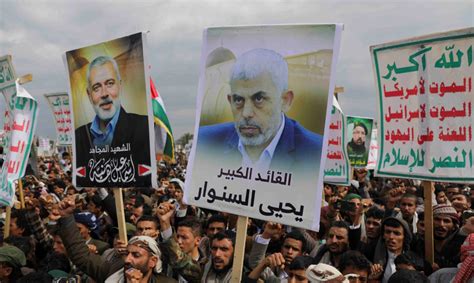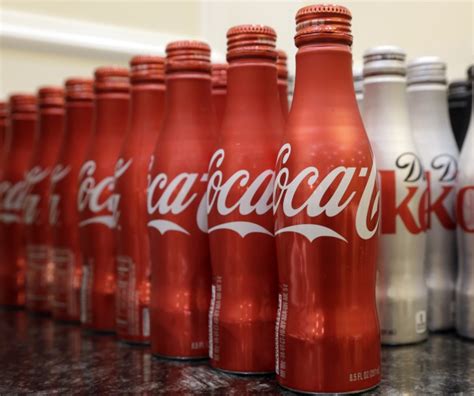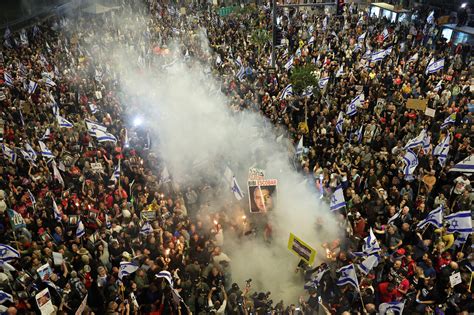
Prince William and Kate Middleton reportedly played a pivotal role in preventing a reunion between King Charles III and Prince Harry during the latter’s recent visit to the United Kingdom, amid ongoing tensions within the royal family, according to royal sources.
The Prince and Princess of Wales are said to have influenced the decision to keep King Charles and Prince Harry separate during the Duke of Sussex’s brief visit to London, citing the potential distraction from Charles’s demanding schedule and recovery from cancer treatment. While Buckingham Palace officially cited scheduling conflicts as the reason for the King’s inability to meet with his younger son, insiders suggest William and Kate’s concerns about the emotional toll of a meeting influenced the ultimate decision. This latest development underscores the deep rift that persists within the Royal Family following Harry and Meghan Markle’s departure from their senior royal roles and subsequent public disclosures about their experiences.
The decision not to facilitate a meeting between King Charles and Prince Harry allegedly stemmed from concerns that any interaction could derail King Charles’s ongoing cancer treatment and create unnecessary stress. Sources close to the royal family have indicated that Prince William, in particular, is wary of the potential emotional fallout from engaging with Prince Harry, given the history of strained relations and public disagreements. The situation is further complicated by the fact that King Charles is navigating a challenging health crisis while simultaneously managing his responsibilities as monarch.
“It is all very sad,” one royal insider told Yahoo News, reflecting the overall sentiment regarding the fractured relationships within the family. The primary concern remains the King’s well-being and ensuring that his recovery is not compromised by family drama. The delicate balance between familial reconciliation and the practical demands of royal life continues to be a significant challenge for the monarchy.
Prince Harry’s visit to the UK was primarily focused on attending events related to the Invictus Games, a sporting competition he founded for wounded, injured, and sick servicemen and women. While in London, he made no public appearances with any members of the Royal Family, further highlighting the distance between him and his relatives. The absence of a meeting with his father added another layer of complexity to the already fraught dynamic within the royal household.
The royal family has faced intense public scrutiny in recent years, largely due to the decisions and actions of Prince Harry and Meghan Markle. Their departure from royal duties in 2020, often referred to as “Megxit,” led to a significant restructuring of the monarchy and triggered a period of reflection within the institution. The couple’s subsequent interviews and media appearances, including their explosive sit-down with Oprah Winfrey, revealed deep-seated grievances and allegations of racism within the royal establishment, further damaging relations.
Despite these challenges, King Charles has remained committed to his duties as monarch, undertaking a rigorous schedule of public engagements and state functions. His diagnosis with cancer earlier this year has added an additional layer of complexity to his reign, requiring him to balance his health needs with his responsibilities to the nation. The support of Prince William and Kate Middleton has been crucial during this period, as they have stepped up to assist with royal duties and provide stability within the family.
The dynamic between Prince William and Prince Harry has been particularly strained since the latter’s departure from the UK. Once close brothers, their relationship has deteriorated significantly in recent years, with conflicting accounts and differing perspectives contributing to a widening rift. While there have been occasional signs of potential reconciliation, deep-seated issues continue to prevent a full healing of the relationship.
Kate Middleton’s role in the current situation is also noteworthy. As a senior member of the royal family and future Queen Consort, she wields considerable influence within the institution. Her relationship with Prince Harry has reportedly been complicated by the events of the past few years, and she is said to be protective of Prince William and his interests. Her support for William’s stance on the matter is likely to have played a significant role in the decision to limit contact between King Charles and Prince Harry.
The ongoing tensions within the royal family raise questions about the future of the monarchy and the challenges it faces in adapting to the changing expectations of the modern world. The ability of the royals to navigate these complex relationships and maintain public trust will be critical to their long-term success. The current situation serves as a reminder of the human element within the institution and the personal sacrifices that often accompany royal life.
Detailed Analysis and Background
The relationship between Prince William and Prince Harry has been under intense scrutiny for several years, particularly since Harry’s marriage to Meghan Markle and their subsequent decision to step down as senior royals. The brothers, once inseparable, have seemingly drifted apart, with conflicting reports about the nature of their interactions. Sources close to the family have described a growing distance, fueled by differing perspectives on royal life, personal ambitions, and the handling of media attention.
The core of the disagreement appears to stem from Harry and Meghan’s dissatisfaction with their roles within the Royal Family and their perception of a lack of support from the institution. They felt constrained by the rigid protocols and traditions of royal life, and they struggled to navigate the intense media scrutiny that came with their positions. Their decision to step down as senior royals was driven by a desire for greater autonomy and the opportunity to pursue their own philanthropic and business ventures.
However, their departure from royal duties and subsequent interviews and media appearances exacerbated tensions with other members of the Royal Family. The couple’s allegations of racism and mistreatment within the institution caused deep hurt and resentment, further straining relationships with Prince William and King Charles. The public airing of private grievances created a media frenzy and intensified the pressure on the Royal Family to address the issues raised by Harry and Meghan.
Prince William, in particular, is said to have been deeply hurt by the couple’s actions. As the future King, he is committed to upholding the traditions and values of the monarchy, and he viewed Harry and Meghan’s departure as a betrayal of their royal duties. He is also reportedly concerned about the impact of their actions on the reputation of the Royal Family and its ability to maintain public trust.
The dynamic between Prince William and Prince Harry is further complicated by the fact that they are both public figures with significant influence. Their personal relationship is constantly under scrutiny, and their interactions are often interpreted through the lens of their royal roles. This creates a challenging environment for reconciliation, as any attempt to mend fences is likely to be met with intense media attention and public speculation.
Kate Middleton’s role in the family dynamic is also crucial. As the Princess of Wales, she is a respected and admired member of the Royal Family, and she has played a key role in supporting Prince William and King Charles. She is known for her diplomatic skills and her ability to navigate complex relationships, but she is also fiercely protective of her family. Her support for Prince William’s stance on the Harry and Meghan situation is likely to have been a significant factor in the decision to limit contact between King Charles and Prince Harry.
The broader context of these familial tensions is the ongoing debate about the future of the monarchy. The Royal Family is facing increasing pressure to modernize and adapt to the changing expectations of the public. The younger generation of royals, including Prince William and Kate Middleton, are seen as key to ensuring the long-term relevance and sustainability of the institution. However, the challenges of balancing tradition with modernity, and maintaining public trust in an era of increasing scrutiny, are significant.
The decision to limit contact between King Charles and Prince Harry reflects the complex pressures facing the Royal Family. On the one hand, there is a desire to heal the fractured relationships and present a united front to the public. On the other hand, there are concerns about the potential emotional toll of engaging with Harry and Meghan, given the history of strained relations and public disagreements. The need to protect King Charles’s health and well-being, while he undergoes cancer treatment, has further complicated the situation.
The ongoing tensions within the Royal Family highlight the challenges of navigating personal relationships within a public institution. The royals are expected to uphold the traditions and values of the monarchy, while also managing their own personal lives and relationships. The pressure to maintain a perfect image and avoid controversy can create significant stress and strain, particularly when dealing with complex family dynamics.
The situation also underscores the importance of communication and understanding in resolving conflicts. The lack of open and honest communication between Prince William and Prince Harry has contributed to the widening rift between them. The public airing of grievances and the reliance on media channels to convey messages have further damaged their relationship. A genuine effort to engage in meaningful dialogue and address the underlying issues is essential for any potential reconciliation.
Ultimately, the future of the relationship between Prince William and Prince Harry, and the broader stability of the Royal Family, depends on their ability to overcome their differences and find common ground. This will require a willingness to forgive past hurts, a commitment to open communication, and a shared understanding of the challenges and responsibilities of royal life. The road to reconciliation may be long and difficult, but it is essential for the long-term health and well-being of the monarchy.
Expanded Context and Implications
The reported intervention of Prince William and Kate Middleton in preventing a meeting between King Charles and Prince Harry underscores the intricate power dynamics and unresolved conflicts within the British Royal Family. This situation isn’t merely a family squabble; it carries significant implications for the monarchy’s image, stability, and future trajectory. To fully grasp the gravity of this situation, it’s crucial to dissect the historical context, the personalities involved, and the potential consequences of these persistent rifts.
Firstly, the historical context is marked by a long tradition of sibling rivalries and power struggles within royal families. From the Tudors to the Windsors, the competition for the throne, influence, and resources has often led to strained relationships and even open conflict. In the case of William and Harry, the pre-determined line of succession placed William in the direct path to the throne from birth, while Harry occupied the role of the “spare,” a position historically fraught with challenges. While both brothers were raised with a deep sense of duty and service, the inherent difference in their destinies inevitably created a different set of expectations and experiences.
Secondly, the personalities of the key players contribute significantly to the ongoing drama. Prince William, known for his steadfastness, adherence to tradition, and cautious approach, embodies the qualities expected of a future monarch. He has consistently prioritized his royal duties and responsibilities, often placing them above personal desires. Kate Middleton, with her grace, poise, and ability to connect with the public, has become an invaluable asset to the Royal Family. She is seen as a stabilizing force and a bridge between the monarchy and the modern world.
In contrast, Prince Harry has always been perceived as the more rebellious and emotionally expressive of the two brothers. He struggled with the constraints of royal life and sought to carve out his own identity beyond the confines of tradition. His marriage to Meghan Markle, an American actress and activist, further challenged the established norms of the Royal Family. Their decision to step down as senior royals and pursue independent ventures reflected a desire for greater autonomy and the freedom to speak out on issues they are passionate about.
The contrasting personalities and priorities of William and Harry, coupled with the historical context of sibling rivalry, have created a fertile ground for conflict. The events surrounding Harry and Meghan’s departure from royal duties, including their explosive interview with Oprah Winfrey, exacerbated these tensions and deepened the rift between the brothers. The allegations of racism and mistreatment within the Royal Family struck at the heart of the institution’s credibility and raised fundamental questions about its values and inclusivity.
The reported intervention of William and Kate in preventing a meeting between King Charles and Prince Harry suggests that the wounds from those past events are still raw. Their concerns about the emotional toll of such a meeting on King Charles, particularly during his cancer treatment, are understandable. However, the decision also reflects a lack of trust and a reluctance to engage in meaningful dialogue. It perpetuates the cycle of conflict and reinforces the perception of a fractured Royal Family.
The potential consequences of these persistent rifts are far-reaching. A divided Royal Family weakens the monarchy’s image and undermines its ability to command respect and authority. Public confidence in the institution depends on its ability to present a united front and demonstrate a commitment to serving the nation. When internal conflicts are aired publicly, it erodes trust and fuels skepticism about the Royal Family’s relevance and purpose.
Furthermore, the ongoing drama distracts from the important work that the Royal Family undertakes. King Charles, Prince William, and other members of the family are involved in numerous charitable initiatives and public service projects. Their efforts to promote education, environmental conservation, and social welfare are often overshadowed by the media’s obsession with personal conflicts. This detracts from the positive contributions that the Royal Family makes to society and diminishes its ability to effect meaningful change.
Looking ahead, the Royal Family faces a critical juncture. The death of Queen Elizabeth II marked the end of an era and ushered in a new chapter for the monarchy. King Charles has embraced his role with dedication and commitment, but he faces significant challenges in navigating the complex dynamics within his family and maintaining public support. Prince William, as the heir to the throne, bears a heavy responsibility to ensure the long-term stability and relevance of the institution.
Reconciliation between William and Harry is essential for the future of the monarchy. While it may not be possible to fully mend their fractured relationship, finding a way to coexist peacefully and support each other’s endeavors is crucial. This requires a willingness to forgive past hurts, engage in open communication, and prioritize the well-being of the Royal Family above personal grievances.
The Royal Family must also address the underlying issues that have fueled the conflicts of the past. This includes a willingness to modernize the institution, embrace diversity and inclusivity, and adapt to the changing expectations of the public. The monarchy’s long-term survival depends on its ability to remain relevant and responsive to the needs of the nation.
In conclusion, the reported intervention of Prince William and Kate Middleton in preventing a meeting between King Charles and Prince Harry is a symptom of deeper problems within the Royal Family. These problems stem from historical context, personality differences, and a failure to address underlying issues. The potential consequences of these persistent rifts are far-reaching, threatening the monarchy’s image, stability, and future trajectory. Reconciliation and reform are essential for the Royal Family to navigate these challenges and ensure its long-term relevance and success. Only through genuine dialogue, forgiveness, and a commitment to modernization can the Royal Family heal its divisions and restore public trust.
FAQ Section
1. Why didn’t Prince Harry meet with King Charles during his UK visit?
Officially, Buckingham Palace cited scheduling conflicts as the reason for King Charles’s inability to meet with Prince Harry during his visit to the United Kingdom. However, sources suggest that Prince William and Kate Middleton influenced the decision, concerned about the potential stress on King Charles, who is currently undergoing cancer treatment. “It is all very sad,” one royal insider told Yahoo News, indicating the sensitivity of the situation.
2. What role did Prince William and Kate Middleton play in preventing the meeting?
According to reports, Prince William and Kate Middleton were wary of the potential emotional fallout from a meeting between King Charles and Prince Harry. Given the history of strained relations and public disagreements, they reportedly believed that any interaction could derail King Charles’s ongoing cancer treatment and create unnecessary stress. Their influence is said to have played a significant role in the ultimate decision.
3. What are the underlying reasons for the strained relationship between Prince William and Prince Harry?
The relationship between Prince William and Prince Harry has been strained since Harry’s marriage to Meghan Markle and their subsequent decision to step down as senior royals. Conflicting accounts and differing perspectives on royal life, personal ambitions, and the handling of media attention have contributed to a widening rift. Harry and Meghan’s allegations of racism and mistreatment within the Royal Family further exacerbated tensions.
4. How might the ongoing tensions within the Royal Family affect the monarchy’s future?
The ongoing tensions within the Royal Family raise questions about the future of the monarchy and the challenges it faces in adapting to the changing expectations of the modern world. A divided Royal Family weakens the monarchy’s image and undermines its ability to command respect and authority. Public confidence in the institution depends on its ability to present a united front and demonstrate a commitment to serving the nation.
5. What steps could be taken to improve relations within the Royal Family?
Reconciliation between Prince William and Prince Harry is essential for the future of the monarchy. This requires a willingness to forgive past hurts, a commitment to open communication, and a shared understanding of the challenges and responsibilities of royal life. A genuine effort to engage in meaningful dialogue and address the underlying issues is essential for any potential reconciliation. The Royal Family must also address the underlying issues that have fueled the conflicts of the past, including a willingness to modernize the institution and embrace diversity and inclusivity.









